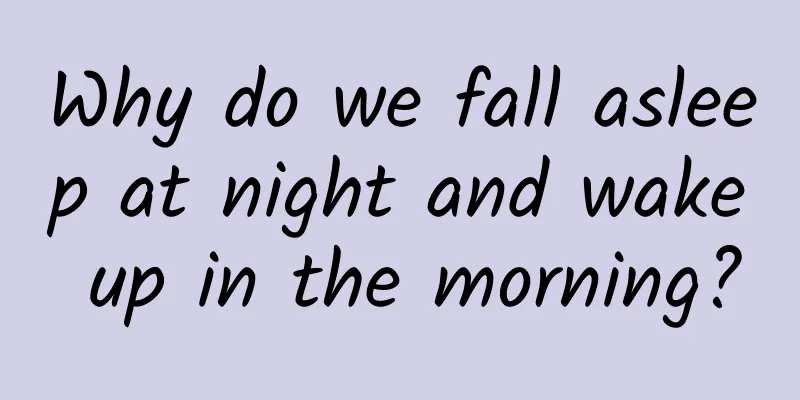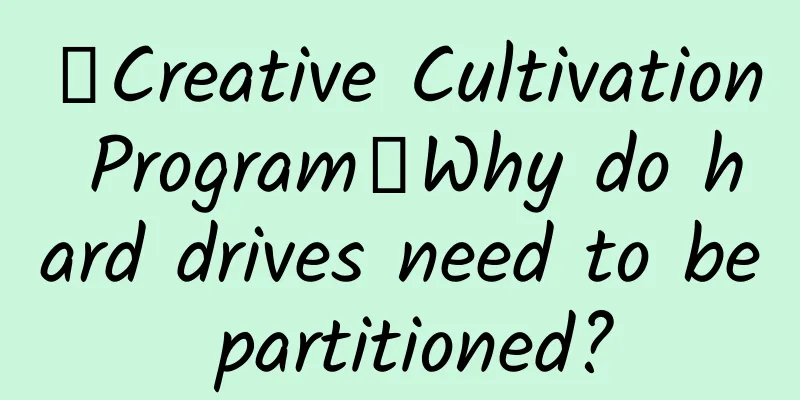Why do we fall asleep at night and wake up in the morning?

|
In temperate zones, or in low-latitude areas, in addition to a suitable climate, distinct changes in light and darkness are also very important for all living things. Every day we spend basically, we fall asleep tired at night and wake up again in the morning. This constant alternation of light and darkness is a rhythm that almost all living things must adapt to in order to survive and reproduce. What controls this rhythm is our body's biological clock, or more precisely, a manifestation of the biological clock - the circadian rhythm. In 2017, the Nobel Prize in Physiology was awarded to the following three scientists for "discovering the molecular mechanism regulating circadian rhythms." So how does this circadian rhythm form? Speaking of which, circadian rhythm is also a type of biological clock (biological clock is a very broad concept). Since they are all clocks, let’s first look at the clocks we know in daily life. After buying a watch, we need to do one thing, which is to calibrate the time . The reference standard time is generally the standard time of each country, such as Beijing time in China. The suprachiasmatic nucleus (SCN) in the anterior hypothalamus of our brain is equivalent to a central clock in our body, and this central clock also needs to calibrate the time. The "Beijing time" it uses as a reference is light. Because this correction occurs every day and night, the cycle of this central clock is 24 hours. In addition to checking the time, the various pointers on the clock are constantly turning, indicating that time is passing. Similarly, this small clock in our brain also has pointers, but it is not as precise as the clocks in our lives. It only indicates two states - day and night, and it is melatonin that controls the movement of the pointers. The pineal gland is an important endocrine gland in the hypothalamus. Although it is only the size of a pea, its physiological importance proves that size is actually irrelevant . What makes the pineal gland so important is the hormone it secretes: melatonin. The secretion of melatonin is closely related to the circadian rhythm. In summer (long days and short nights), the secretion (high) lasts for a shorter period of time, while in winter (short days and long nights), the secretion lasts for a longer period of time. When the secretion of this hormone increases, our brain begins to enter the night time, but the production of melatonin is affected by light, so the relationship between melatonin and light is not very good. When light hits the retina, it generates a bioelectric signal, which is then sent to the SCN via the neural pathways of the retinohypothalamic tract. The SCN then sends a signal to the hypothalamic nucleus, telling it: "Hey, I see light (signal transmitted by the optic nerve), you tell the pineal gland to produce less melatonin, and the day has begun." There is no other way, the hypothalamus will inhibit the enzymatic reaction of the pineal gland to produce melatonin, reducing the secretion of melatonin; Then, when the sun sets, the SCN receives fewer light signals and no longer requires the hypothalamus to inhibit the pineal gland from producing melatonin. When there are no restrictions, the pineal gland begins to increase the secretion of melatonin. At this time, our central clock enters night mode. After sunset, melatonin secretion increases However, because the lights in the city now make the night as bright as day, SCN has to "work overtime" "forced". Accordingly, the secretion of melatonin is still suppressed at night, and everyone's bedtime is pushed later and later. However, you may still have a question: why can SCN indirectly control the secretion of melatonin? Because looking at all the cells in our body, except for the "visual cells", other cells do not have the ability to sense photos, so these cells can be said to be working in a "dark" environment. In this situation, there will always be mistakes. At this time, the suprachiasmatic nucleus (SCN) becomes the commander-in-chief. It can receive signals from the optic nerve, and after correcting the time, it transmits signals from the central brain to other parts of the body, telling other cells that it is dawn and you can do what you should do during the day. At this time, the commander-in-chief has spoken, and a communicator is needed. Our human endocrine system plays this role. By secreting various hormones, the endocrine system transmits the central command to various parts of the body. Different hormones have the function of transmitting different signals. Speaking of which, the suprachiasmatic nucleus is a bit like an old mother who wakes up early. When she wakes up, she will wake up her children, and those who should go to school will go to school, those who should go to work will go to work, and those who should do whatever they should do! |
<<: If you have posted these five types of photos, please delete them immediately!
>>: An An, the world's oldest male giant panda, dies - equivalent to 105 years old in human years
Recommend
A new satellite has been added to Jupiter: How was it discovered? By whom?
Astronomy enthusiasts discover a new small satell...
How do I check the headline index of my Toutiao account? How do I check the Toutiao index today?
Same problem: Where can I check the Toutiao Index...
Look! Here is an analysis of the advertising placement of Qutoutiao!
As a rising star of Toutiao, advertisers certainl...
National Iodine Deficiency Disease Prevention and Control Day丨Take this "treasure iodine"! Learn about iodine supplementation together
May 15, 2023 is the 30th "Iodine Deficiency ...
Exact match extension, how to do SEM keyword expansion?
Under the premise of "exact match" in k...
Figure out these 8 questions and save 50% of your advertising and marketing budget!
The content discussed in this article is applicab...
Red envelopes are rolling in! Have you used these new features of WeChat?
The Spring Festival is just a few days away, and ...
Traffic is becoming more and more expensive. How can we achieve high conversions with a low budget?
I guess everyone has been bidding for some time. ...
Volvo S90 T8: Tonight's showdown with BMW 5 Series in Akina Mountain gives it two seats
As we all know, Mercedes-Benz focuses on luxury a...
Latest! Monkeypox will be included in Class B infectious diseases. Learn more about prevention in one picture
According to the website of the National Health C...
How to join Baidu AiPurchasing? How to activate Baidu AiPurchasing?
With the launch of Baidu Ai Purchasing (good ranki...
Shao Yiding of Youpengpule: It is unethical for Internet TV not to make a profit
"Is Internet TV good?", "Yes!"...
Smartphones: The momentum is not diminishing and will continue to be popular
From a geek toy when it first came out to a porta...
What is the best time to eat breakfast? No later than this time, many people fail to reach it...
When is breakfast considered breakfast? This ques...
[Smart Farmers] How to check if fruits are "injured"? Fruit "Doctor" is now online!
In modern agriculture and food production, ensuri...









